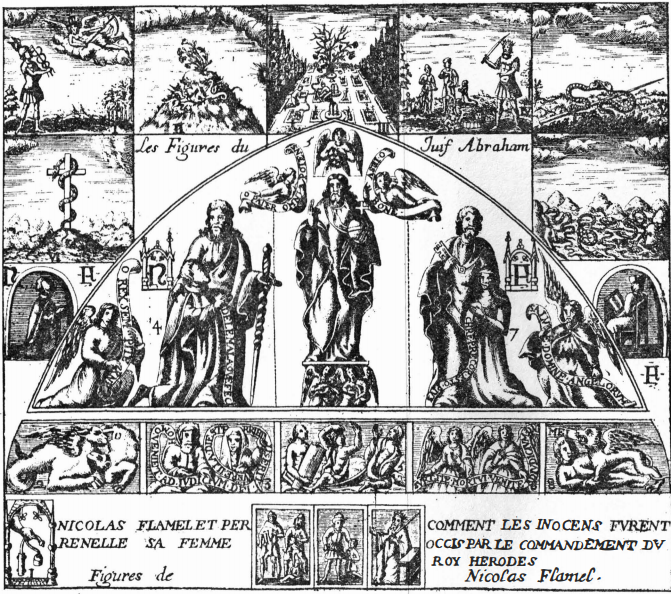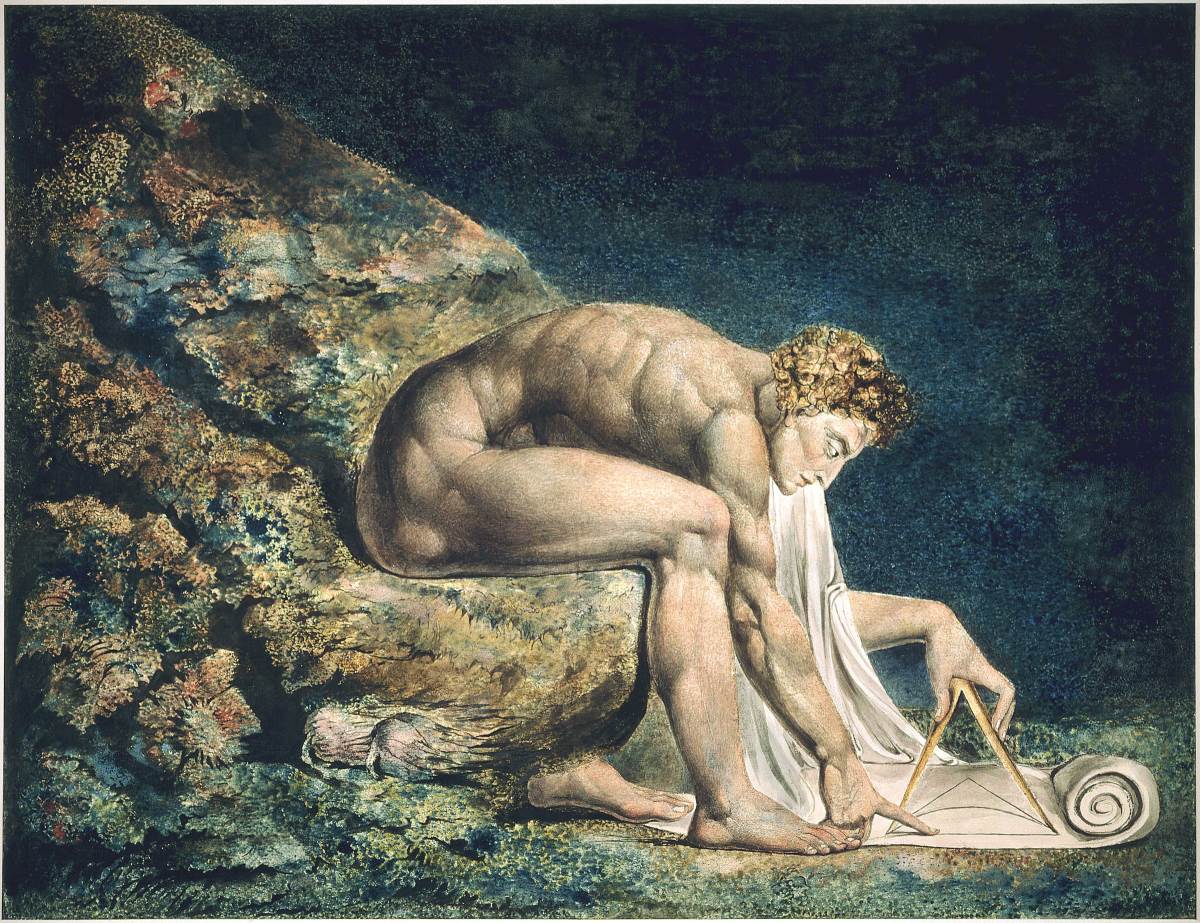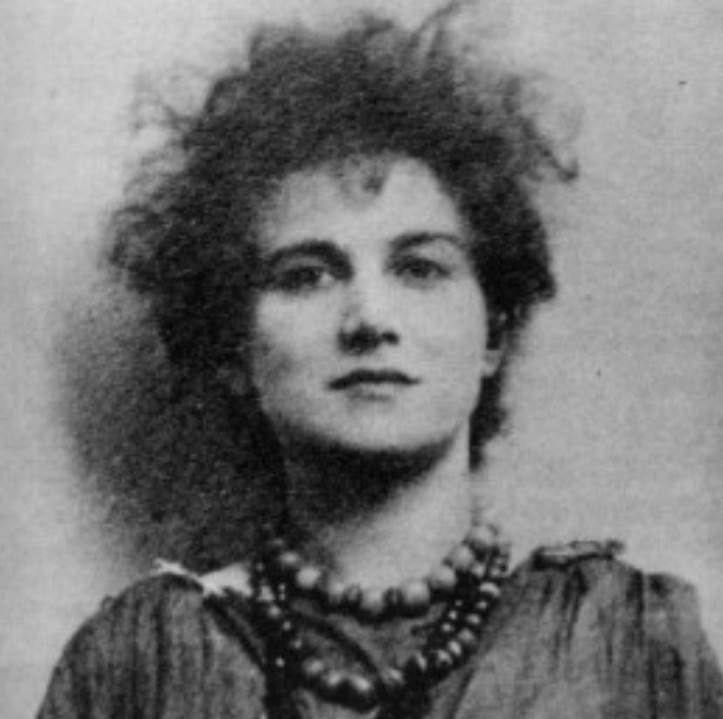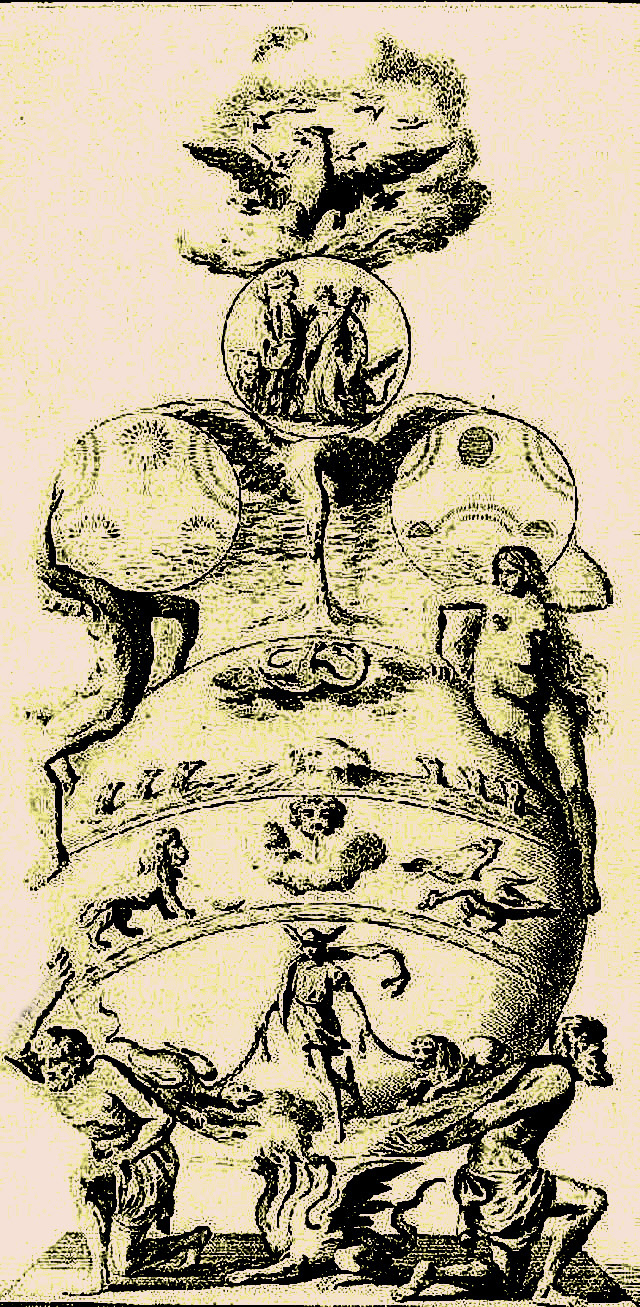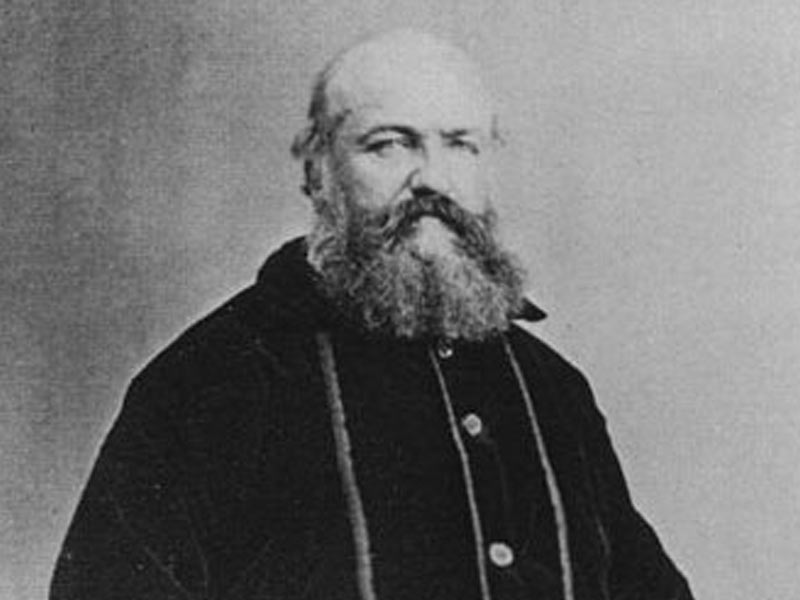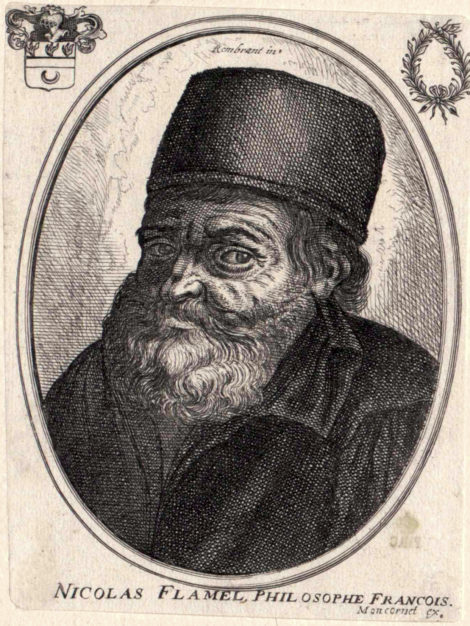
Portrait of alchemist Nicolas Flamel by the French painter Balthazar Montcornet from the 17th century. The French scribe is the epitome of Alchemy and his legendary possession of the Philosopher’s stone appears in esoteric literature such as the alchemical novel »The Red Lion« by Maria Szepes as well as fantasy stories such as »Harry Potter«
At the core of any legend, there’s a dream. Such as a dream to turn any metal into gold, whether by touch or by other means, and the dream to live for as long as it is possible. But Nicholas Flamel’s dream was different. He did not dream of gold and immortality. Instead, he dreamt of a book, a book he could not read but which he was determined to decipher. In his famous dream, Flamel was visited by an angel who held a book in his hands and told him: »Look well at this book, Nicolas. At first, you will understand nothing in it neither you nor any other man. But one day you will see in it that which no other man will be able to see«.
One day, when he was working alone in his shop, a stranger came to sell him a manuscript. Flamel recognized the book, it was the one he had dreamt of before and he immediately bought it without bargaining. The book’s pages were grouped into 3 parts of 7 pages each. He noticed Greek, Hebrew, and other writing he couldn’t recognize, as well as diagrams and symbols he couldn’t understand. His dream for the next 21 years would be to decipher this mysterious and divine book. His quest for knowledge made him immortal, as in our minds today he is still remembered as the alchemist who had never died, the one who discovered the Philosopher’s Stone and the Elixir of Life.
The Life of an Alchemical Legend
In 1368 he married Perenelle, a widow who was married twice before and who had inherited the wealth of her former husbands. She was supposedly a little bit older than Flamel, very intelligent, but most importantly, she was discreet enough to become his confidant and perhaps even his partner in the practice of alchemy. The Flamels were both Roman Catholic philanthropists who used much of their wealth in support of the church. In fact, it is believed that they were alchemists whose transmutations resulted in multiple charitable and generous acts all over Paris and Boulogne.
Flamel’s life is a real mystery, just as much as his death is. But it seems that in the 17th century, the historical Flamel turned into an alchemical legend. That is because it was believed that he was successful in his quest for discovering the Philosopher’s Stone and the Elixir of Life. But how did this belief appear in the first place?
Even though there is no real indication that the historical Flamel was as wealthy as the alchemical legend, perhaps some believed that his wealth and generosity was possible due to his knowledge of turning base metals into gold and that his long life in a time when people died young was because he had discovered the Elixir of Life.
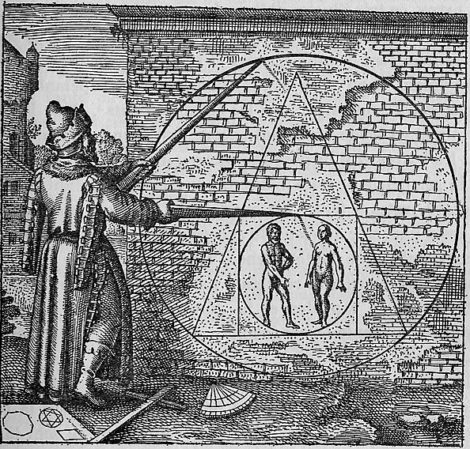
Emblem depicting the Philosopher’s Stone from Atalanta Fugiens by Michael Maier (1617). While many have speculated over its source and composition, the alchemical symbol of the Squared Circle is the geometric expression of the metaphorical stone.
It could also be that he truly was an adept and people believed his wealth and longevity was a result of it. It is also possible that his legend may have been a hoax made by the publisher, P. Arnauld de la Chevalerie who wrote the book using the pseudonym »Eiranaeus Orandus«. While historians today tend to believe the hoax version, especially in the 17th and 18th centuries, people defended the validity of the book and the legend.
Alleged sightings of Flamel at the time enforced the belief he was still alive thanks to the Elixir of Life that he had discovered and some even suggested that the publishing of the book was orchestrated entirely by Flamel who anticipated the ripples it would make and which would travel further in time.
Either way, the legend is just as intriguing as the enigmatic figure in history who indeed was a real person and because of the few and vague facts we have, it is safe to say that the very way this legend transfers to our “history of magic” and even pop-culture, is making a significant and even “alchemical” impact on an adept’s imagination and even aspiration. And that is a fact that speaks for itself.
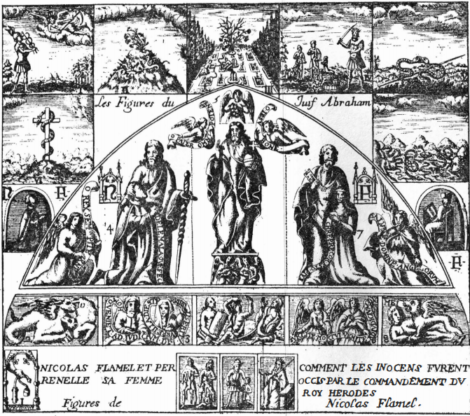
Alchemical hieroglyphics from the Book of Hieroglyphic Figures by Nicolas Flamel. The depictions were meant to be painted on an arch in Cimetière des Innocents, in the churchyard of St. Innocents. According to the book, these depictions were inspired by the “strange figures” engraved in the mysterious manuscript that sent Flamel on the quest for the Philosopher’s Stone.
Most of what we know of Flamel’s life comes from a book which was published in 1612 in Paris. The book called »Livre des figures hiéroglyphiques« is claimed to be Nicolas Flamel’s own long-lost composition comprised of designs he commissioned for a tympanum at the Cimetière des Innocents, which was already gone by the time the book was published.
The introduction to the book was made by the publisher and it describes a quest for the Philosopher’s Stone in which Flamel was deeply involved. His quest started with the purchase of a mysterious book of only 21-leaves whose contents he tried to elucidate. One night he dreams of an angel announcing a book to him, and sometime after that, a stranger sells him the same object foretold by the angel in his dream.
To uncover the mystery, he traveled to Santiago de Compostela in Spain in 1378, under the pretext of a pilgrimage to hide the true purpose of his visit to Spain, which was to perhaps enlist the help of an erudite Cabalist for a translation of the parts of the book which were in Hebrew. He got lucky on his way back home when he met a sage who helped translate one of the book’s pages and who told him that the mysterious book in his possession was a copy of the »Book of Abramelin«.

Page from the Book of Abramelin, published in 1725. It is believed that the mysterious manuscript in Flamel’s possession was a copy of the book which contains Abramelin’s secrets on magic, Kabbalah, and the making of the Philosopher’s Stone. The influence of this book stretches all the way from medieval alchemy to the Hermetic Order of the Golden Dawn.
It is said that Flamel studied the book for 21 years – a year for each page of the book. But it was truly the Hebrew translation that enabled him and his wife to successfully uncover the instructions for obtaining the Philosopher’s Stone with which they were able to produce silver in 1382, and gold soon after that.
Some constructions attributed to Flamel seem to indicate that he might’ve indeed all of a sudden acquired wealth with which he was able to build estates, such as houses, churches, and hospitals. And many suggest and believe that this wealth was acquired through the use of the Philosopher’s Stone which he discovered.
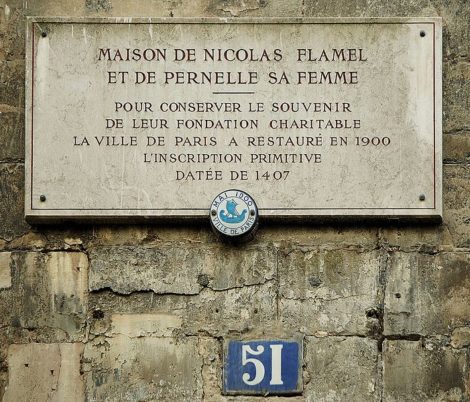
At 51 rue de Montmorency, Paris, the house of Nicolas Flamel is a historic monument that still stands today. The house is considered to be one of the oldest in Paris and many believe that while Flamel built, he never lived there. Nevertheless, after Flamel’s death, the house was broken into multiple times in an attempt to find clues to the Philosopher’s Stone.
One of the houses Nicolas Flamel built stands since 1407 until today in Paris, at 51 Rue de Montmorency with its old inscription on the facade: »Nous homes et femes laboureurs demourans ou porche de ceste maison qui fut faite en l’an de grâce mil quatre cens et sept somes tenus chascun en droit soy dire tous les jours une paternostre et un ave maria en priant Dieu que sa grâce face pardon aus povres pescheurs trespasses Amen«. (»We, ploughmen and women living at the porch of this house, built in 1407, are requested to say every day an ‘Our Father’ and an ‘Ave Maria’ praying God that His grace forgives poor and dead sinners.«)
Although he was »rich« in the eyes of many, especially having discovered the Philosopher’s Stone, Nicolas Flamel was leading a life of modesty and compassion, and the gold he had obtained he used only to help the poor and those in need, instead of overindulging himself in material wealth, which is perhaps where the secret of the Stone lies. Historian Louis Figuier writes: »Husband and wife lavished succor on the poor, founded hospitals, built or repaired cemeteries, restored the front of Saint Genevieve des Ardents and endowed the institution of the Quinze-Vingts, the blind inmates of which, in memory of this fact, came every year to the church of Saint Jacques la Boucherie to pray for their benefactor, a practice which continued until 1789«.
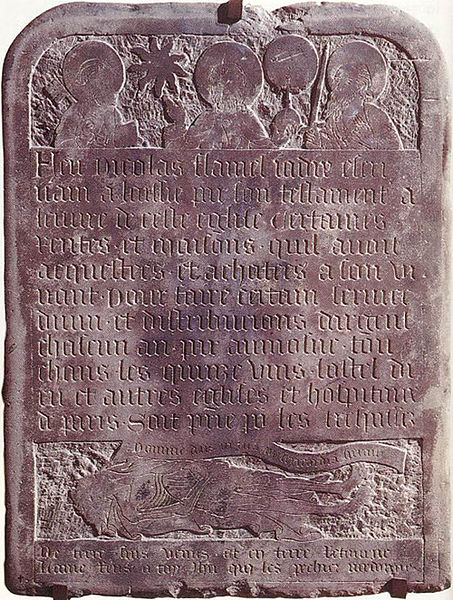
Nicolas Flamel designed his own tombstone in 1410. Although his tomb was sacked by those who searched for his secrets, the Stone, and the Manuscript, many believe that his tomb is in fact empty because he never died in the first place, having found the secret of immortality.
In 1397, Flamel’s wife, Perenelle died. He continued to take care of his manuscript business until his death. When he reached his 80s, in 1410, Flamel started preparing for his own death and he designed his own tombstone. On it, there can be seen carved images of Christ, St. Peter, St. Paul, as well as a sun above a key and a closed book in between the figures. It can still be admired today at Musée de Cluny in Paris, where it is kept. Flamel died in 1418. But his legend was just being born.
The Quest continues
After his death rumors started spreading that Flamel left clues for the formula of the Stone in his grave and other places with significance to him. In more recent times, it’s been suggested that these clues will lead one to the very alive and kicking Nicolas Flamel, for there is where the Stone lies. Because of these rumors, the sculptures and inscriptions connected to Flamel were broken off and removed by desperate adepts who even broke into his home in an attempt to find either the mysterious book or the Stone.
These rumors got out of hand in the 17th century especially, with the publishing of the book »Livre des figures hiéroglyphiques« and the alleged sightings of Flamel being alive well after 200 years from his death. It is then that most of his buildings were ransacked and damaged, along with all the clues, inscriptions, and perhaps even documents he had written.
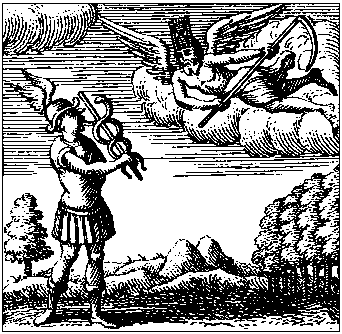
»God Mercury of the Pagans«, engraving from the Book of Hieroglyphic Figures by Nicolas Flamel. The engraving depicts Mercury or Hermes facing an old man who symbolizes Death. The image is symbolic of the relationship between alchemy and death and it is an allegory to Flamel’s legend.
A document which is alleged to have been originally written by Flamel in 1414 in a »coded alphabet consisting of 96 letters« surfaced in 1750, when the myths and sightings of Flamel were still circulating. In 1758, Monsieur de Saint Marc and his friend, Father Pernetti, decoded the document and it looks like it contains instructions on how to make the Philosopher’s stone:
»Take thou in the first place the eldest or first-born child of Saturn, not the vulgar, 9 parts; of the saber chalibs of the God of War, 4 parts. Put this latter into a crucible, and when it comes to a melting redness, cast therein the 9 parts of Saturn, and immediately this will redden the other. Cleanse thou carefully the filth that arises on the surface of the saturnia, with saltpetre and tartar, four or five times. The operation will be rightly done when thou seest upon the matter an astral sign like a star.«
More important than the Stone in this legend is Flamel who is undoubtedly the most famous alchemist of all times, having made appearances in Isaac Newton’s journal »The Caduceus, the Dragons of Flammel«, Victor Hugo’s »The Hunchback of Notre Dame«, J.K. Rowling’s »Harry Potter and the Philosopher’s Stone«, and even the upcoming »Fantastic Beasts: The Crimes of Grindelwald«. But perhaps, the story I find the closest to the truth of the Stone is the one found within the symbols of the movie »As Above So Below«, where a hunt for the Stone starts at the headstone of Nicolas Flamel that leads not to a physical stone, but a non-physical one that is found within upon transcendence.


